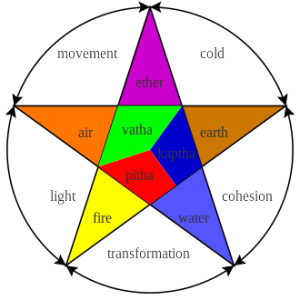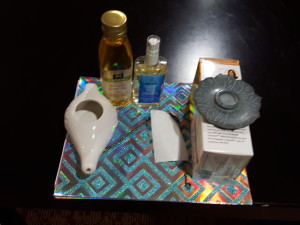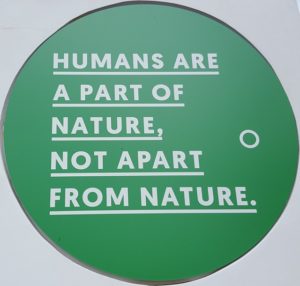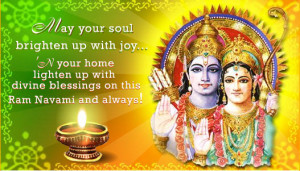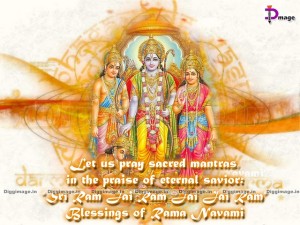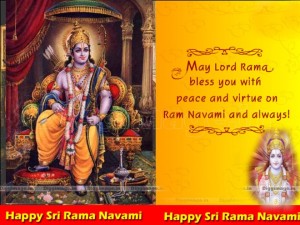Day 1 Morning: PITHI: Mandap Muhurat, Pithi and Ganpati Puja
Mandap Muhurat is the ceremony symbolizing the beginning of the wedding, three days prior to the wedding day. In the Vedic traditions of Hinduism, every auspicious ceremony (Muhurat) – wedding, birth, housewarming, begins with the remembrance and respect of Lord Ganesh. Lord Ganesh embodies the one who removes all obstacles. The parents of the bride seek the blessings of Mother Earth and ask permission to commence with the digging of the soil to erect the mandap (platform erected for the wedding rites covered with a canopy). This puja is performed by a priest in front of a sacred fire.
Pithi (haldi) is a paste made of chick pea flour, turmeric, rose water and other ingredients; the golden concoction is applied to the face, arms and legs of the bride and groom to cleanse and purify them before the wedding ceremony. It is initiated with mango leaves by maternal aunts, (mother’s brothers’s wives) and then by bride’s brother’s friends.
Ganpati Puja (Ganepaat) : The bride and her parents will sit together; earthen pots ceremony (Mahya matla vidhi) is performed by the bride’s father’s Sisters, who afterwards will tie a knot in a scarf between the bride’s parents.
Day 1 Evening: MEHNDI: Mingling, Mehndi and Dinner
The bride has henna applied using intricate patterns and detail. It is believed that the deeper the colour on the bride’s hands, the stronger the love between husband and wife. There is also a custom that the bride has her groom’s initials incorporated in the design which he then must find on the wedding night. The event is an important celebration as it marks the start of the wedding festivities.
Day 2 Morning: GRAH SHANTI: Receiving Mosalu and Grah Shanti Puja
Lunch served at 11:30 AM until 2:00 PM
Mosalu, literally translated, means “maternal side.” Although this ceremony is known as the time when the bride’s maternal relatives are welcomed & present her with an abundance of gifts- clothes, jewelry, etc., the bonds and familial relationships which underly this ceremony create an environment of unconditional love, sacrifice, and pure happiness. The bride’s paternal side of the family goes to the entrance of the hall, to officially receive the maternal side of the family.
Grah Shanti ceremony springs from the belief that the stars and constellations exert tremendous influence on the lives of human beings. Any disturbance in the stars can cause harm or clashes in the marital relationship and the lives of the couple. The purpose of the puja is to bring peace among the stars.
Day 2 Evening: SANGEET: An evening of Ceremony, Spirits, Dinner, traditional Garba music and Dancing
Sangeet is a celebration and bright colors are appropriate.
Day 3 Morning: WEDDING: Baraat, Milni and Wedding Ceremony
Baraat (Jaan) = Grooms Party Parade: Groom and his entire groom’s party (Jaan) travel towards the starting arch and tries to impress bridal party with their dance moves. This is led by a drummer (dholi).
A few feet away from the arch the bride’s mother and aunties approach the groom to formally receive him. The groom is going to play hard to get until they hands him an envelope.
The groom will eventually be escorted by the bride’s mother, followed closely by a few of the groom’s cousin sisters, mom and brother. There will be a Baajat (step up stool) set up for the groom. Before he steps up, (Var Bedu ritual) the bride’s younger cousin sister will carry two water pots on her head which represents good omen. Once she walks close enough, the groom’s mother will give her a token of an envelope.
The groom will be asked to remove his shoes and step on the Baajat. Bride’s mother applies chandlo (red kumkum dot) and chokha (rice) on Groom’s forehead, and performs Aarti (light from wicks soaked in ghee (purified butter.)
Varmala Ceremony: Groom’s brother puts his right thumb over the right shoulder of the groom from behind then the pundit starts to chant prayers to invoke Lord Ganesh and various deities for their blessings. While chanting he wraps the raw thread four times around the right big toe of the groom then to the thumb of the brother. Each thread represents a different virtue of human life. The pundit then will take the varmala (garland) and later garland the bride and groom together for Kanyadaan ceremony. Kanyadaan, meaning “giving away the bride” in Sanskrit, is a symbolic marriage ritual for the Bride’s parents and the couple.
Milni is when the bride’s Father and uncles greet all the close male family members on the groom’s side by saying Namaste, shaking hands and exchanging hugs. Close family members of the groom’s will be handed a small red or cream hand towel to place on their right shoulder. It shows that they were formally greeted by the bride’s family. They will all go towards the seating area for the wedding.
Ponkhana (welcoming of the groom): this ceremony is performed by the bride’s mother & involves the use of four mini ponkhana sticks, representing the couple must work together and signifies the couple’s promise to move together as a unit in life. Offerings are given to the deities of four directions; Sunrise, Sunset, Earth and Vegetations to receive their blessings.
Wedding programs will be available to guests at this point to help guide the family through the rest of the ceremony.
Day 3 Evening: RECEPTION: Cocktails, Dinner and Dancing
NOTES:
Vedism is the oldest stratum of religious activity in India for which there exist written materials. It was one of the major traditions that shaped Hinduism. Knowledge of Vedic religion is derived from surviving texts and also from certain rites that continue to be observed within the framework of modern Hinduism. It takes its name from the collections of sacred texts known as the Vedas.
Though it is impossible to say when Vedism eventually gave way to classical Hinduism, a decrease in literary activity among the Vedic schools from the 5th century bce onward can be observed, and about that time a more Hindu character began to appear.
To each Veda is attached a body of prose writings of later date called Brahmanas (c. 800–600 bce), which explain the ceremonial applications of the texts and the origin and importance of the sacrificial rites for which the Vedas were composed.
When Vedic religion gradually evolved into Hinduism between the 6th and 2nd centuries bce, the texts, taken collectively, became the most sacred literature of Hinduism. They are known as Shruti (“What Is Heard”), the divinely revealed section of Hindu literature—in contrast to the later strata of religious literature known as Smriti (“What Is Remembered”), traditional texts attributed to human authors. But in modern Hinduism the Shruti, with the exception of the Upanishads and a few hymns of the Rigveda, is now little known, while some of the Smriti texts remain extremely influential.


